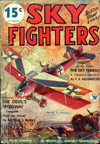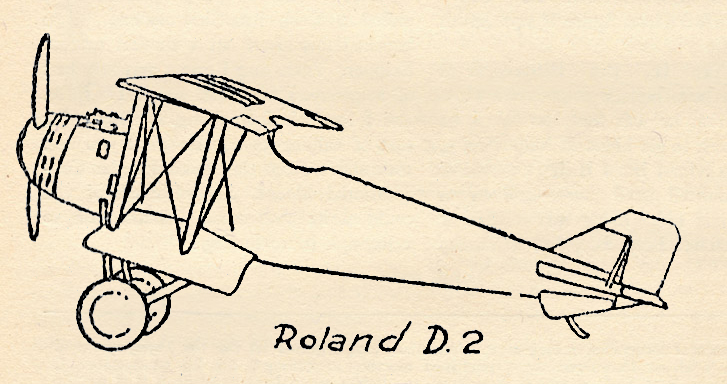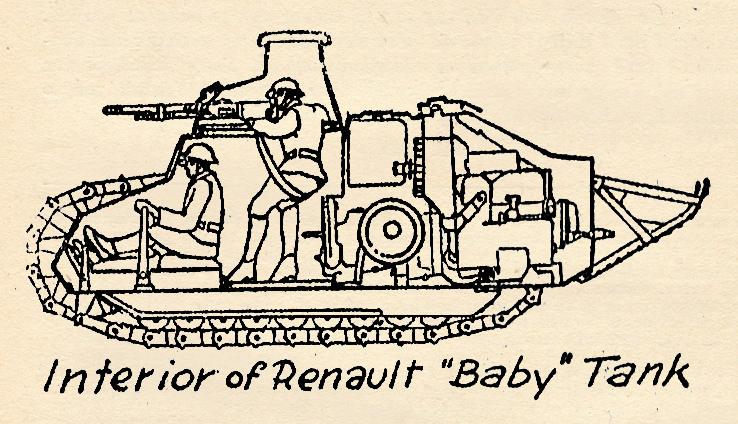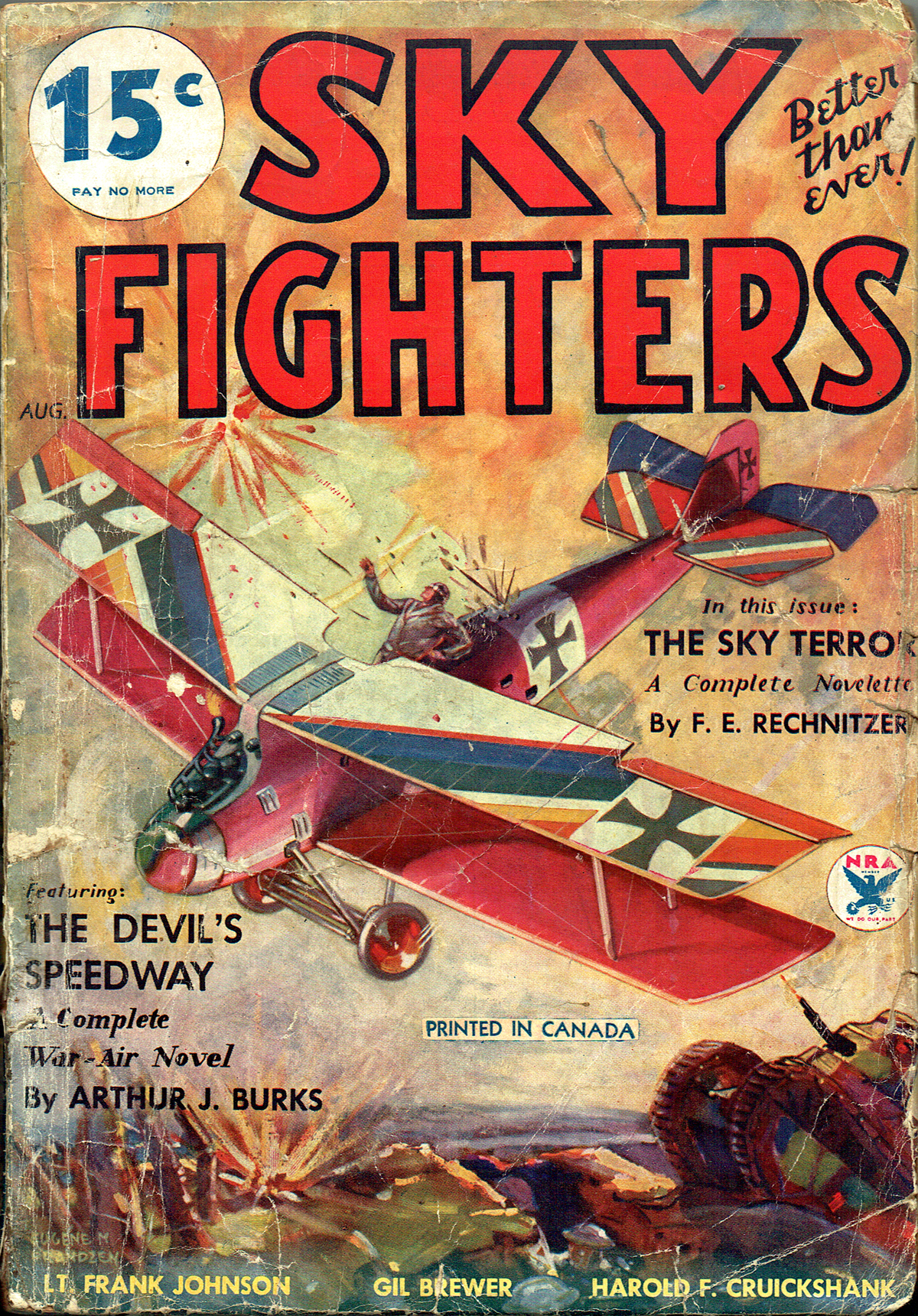Amidst all the great pulp thrills and features in Sky Fighters, they ran a true story feature collected by Ace Williams wherein famous War Aces would tell actual true accounts of thrilling moments in their fighting lives! This time it’s the inimitable Major Raoul Lufbery’s Most Thrilling Sky Fight!
Raoul Lufbery was 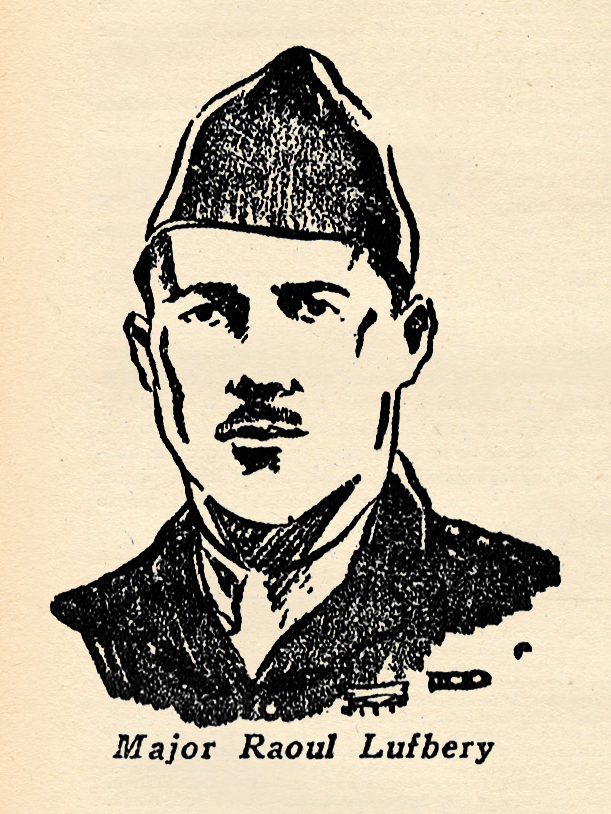 already famous when America entered the War. For some time he was the mechanic of Marc Pourpe, famous French flyer. Pourpe was killed in aerial combat. Lufbery who was with the Foreign Legion, asked to take his place in order to avenge his death. The French army, defying usual procedure sent him to join Escadrille de Bombardmente V. 102, where he made a distinguished record.
already famous when America entered the War. For some time he was the mechanic of Marc Pourpe, famous French flyer. Pourpe was killed in aerial combat. Lufbery who was with the Foreign Legion, asked to take his place in order to avenge his death. The French army, defying usual procedure sent him to join Escadrille de Bombardmente V. 102, where he made a distinguished record.
When the La Fayette Escadrille was formed, he became one of the seven original members of that famous air squadron—and, as it proved ultimately, became the most distinguished, winning his commission as a sous-lieutenant.
When America entered the War he was transferred to the American Air Service and made a major, refusing, however, to take command of a squadron. When he was killed at Toul. Lufbery was officially credited with 17 victories. The story below was told to a Chicago newspaper correspondent a few days before his death at Toul airdrome
THREE AVIATIKS (?) WITH ONE SHOT
by Major Raoul Lufbery • Sky Fighters, December 1933
YOU ASK me my most memorable flight? Let me think a minute. Ah, I have it! It was the day at Luxeuil soon after we got our new Nieuports, the day the great air armada bombed Karlsruhe on the Rhine.
With Prince, De Laage, Masson, I took off from the drome at Luxeuil. We climbed all the time. Below us was the formation of French and British bombers we were to escort. Above were great masses of clouds. We went up through them, looking for Boche on top. But, there were none. That is, I saw none, but I felt that I was being watched.
I glanced up suddenly. Just in time! A three-seater Aviatik was diving on me. My companions had gone ahead. I turned back quickly, making believe I had not seen the Aviatik. I wanted the pilot to come closer before I started shooting.
The Boche tracer screamed over my head. I moved the stick, sent my Nieuport into a screeching chandelle. The black Aviatik whirled past me, tracer streams spouting like fountains. I straightened out, my fingers going tight on the gun trips. I dived, got the Aviatik in range, let go with a long burst while I feathered the controls, making my tracer stream weave. But the Boche pilot was no amateur. He slipped away.
His bullets shattered my compass. The alcohol in the bowl spurted, clouding my goggle glasses. I shoved them up on my forehead. The alcohol sprayed in my eyes, burned. I blinked. All I could see was red. I was blind! But I heard the Boche tracer ripping through my wings. I dived, then maneuvered crazily. I shook my head, threw off one mitten, wiped my eyes with the back of my hand. All the time I was weaving my stick, diving and zooming alternately, to give an erratic target. My eyes began to clear and I looked out overside.
I saw three Aviatiks then. All black, all shooting at me. I maneuvered some more, managed to get my guns lined on one of them. I pressed the gun trips quickly. My tracer streamed out in a blue haze. All three Aviatiks tumbled over in the sky and fell down at once. I banked, went circling after them to see that they crashed. It was only when I was almost to the ground, that I saw it was only one Aviatik that had crashed.
My eyes, blurred by compass alcohol, had tricked me. There was only one Aviatik where I had seen three. I got only one when I thought I had three. But I was happy enough,
anyway.
That one Aviatik might have got me if—I had not been so lucky.
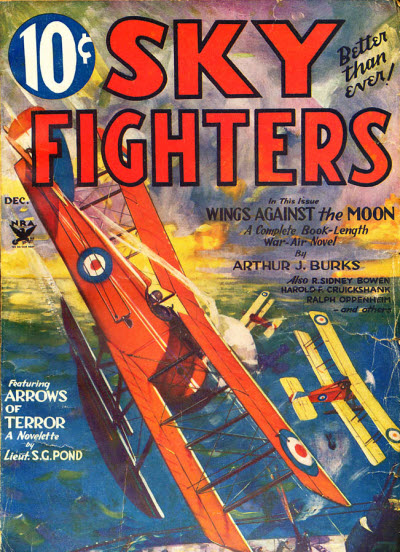 another exciting air adventure from the pages of the pulp magazines of the 1930’s. This week we have a tale from the pen of that Canadian stalwart—Harold F. Cruickshank. Cruickshank was a prolific writer. He wrote all manner os stories for the pulps—war, aviation, westerns, even animal stories!
another exciting air adventure from the pages of the pulp magazines of the 1930’s. This week we have a tale from the pen of that Canadian stalwart—Harold F. Cruickshank. Cruickshank was a prolific writer. He wrote all manner os stories for the pulps—war, aviation, westerns, even animal stories!![]()
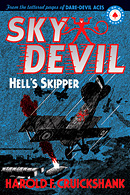 by Harold F. Cruickshank, check out Sky Devil: Hell’s Skipper—All along the Western front, everyone was out to get The Sky Devil’s Brood! There was no better flight in France. Led by Captain Bill Dawe, the famous Yank ace known to all of France as the Sky Devil, the brood consisted of Chuck Verne, Mart Bevin, Slim Skitch and Slug Walton. The crimson devil insignia on their silver Spads brought fear to any German pilot unlucky enough to meet them in the air. But the Sky Devil’s greatest enemy might just be his own C.O., Major Petrie, who had been railroaded into command of 120 Squadron over Dawe’s head. Jealous of Dawe’s popularity, Petrie will do anything to bring down “The Sky Devil’s Brood!â€
by Harold F. Cruickshank, check out Sky Devil: Hell’s Skipper—All along the Western front, everyone was out to get The Sky Devil’s Brood! There was no better flight in France. Led by Captain Bill Dawe, the famous Yank ace known to all of France as the Sky Devil, the brood consisted of Chuck Verne, Mart Bevin, Slim Skitch and Slug Walton. The crimson devil insignia on their silver Spads brought fear to any German pilot unlucky enough to meet them in the air. But the Sky Devil’s greatest enemy might just be his own C.O., Major Petrie, who had been railroaded into command of 120 Squadron over Dawe’s head. Jealous of Dawe’s popularity, Petrie will do anything to bring down “The Sky Devil’s Brood!â€




 already famous when America entered the War. For some time he was the mechanic of Marc Pourpe, famous French flyer. Pourpe was killed in aerial combat. Lufbery who was with the Foreign Legion, asked to take his place in order to avenge his death. The French army, defying usual procedure sent him to join Escadrille de Bombardmente V. 102, where he made a distinguished record.
already famous when America entered the War. For some time he was the mechanic of Marc Pourpe, famous French flyer. Pourpe was killed in aerial combat. Lufbery who was with the Foreign Legion, asked to take his place in order to avenge his death. The French army, defying usual procedure sent him to join Escadrille de Bombardmente V. 102, where he made a distinguished record.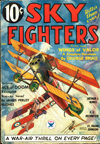
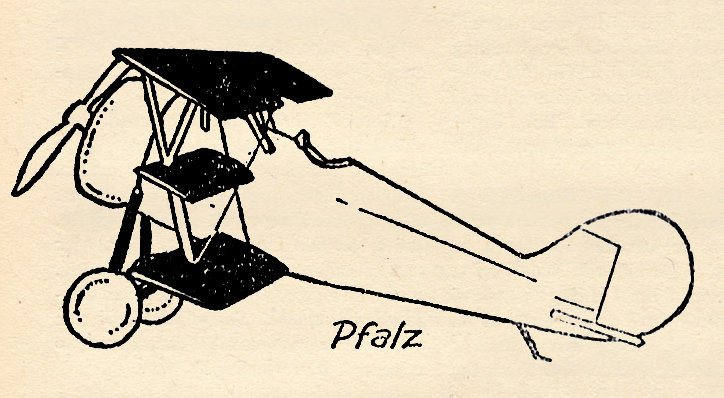
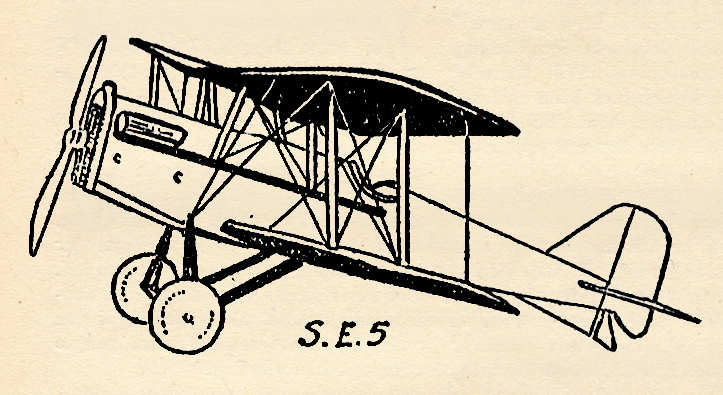
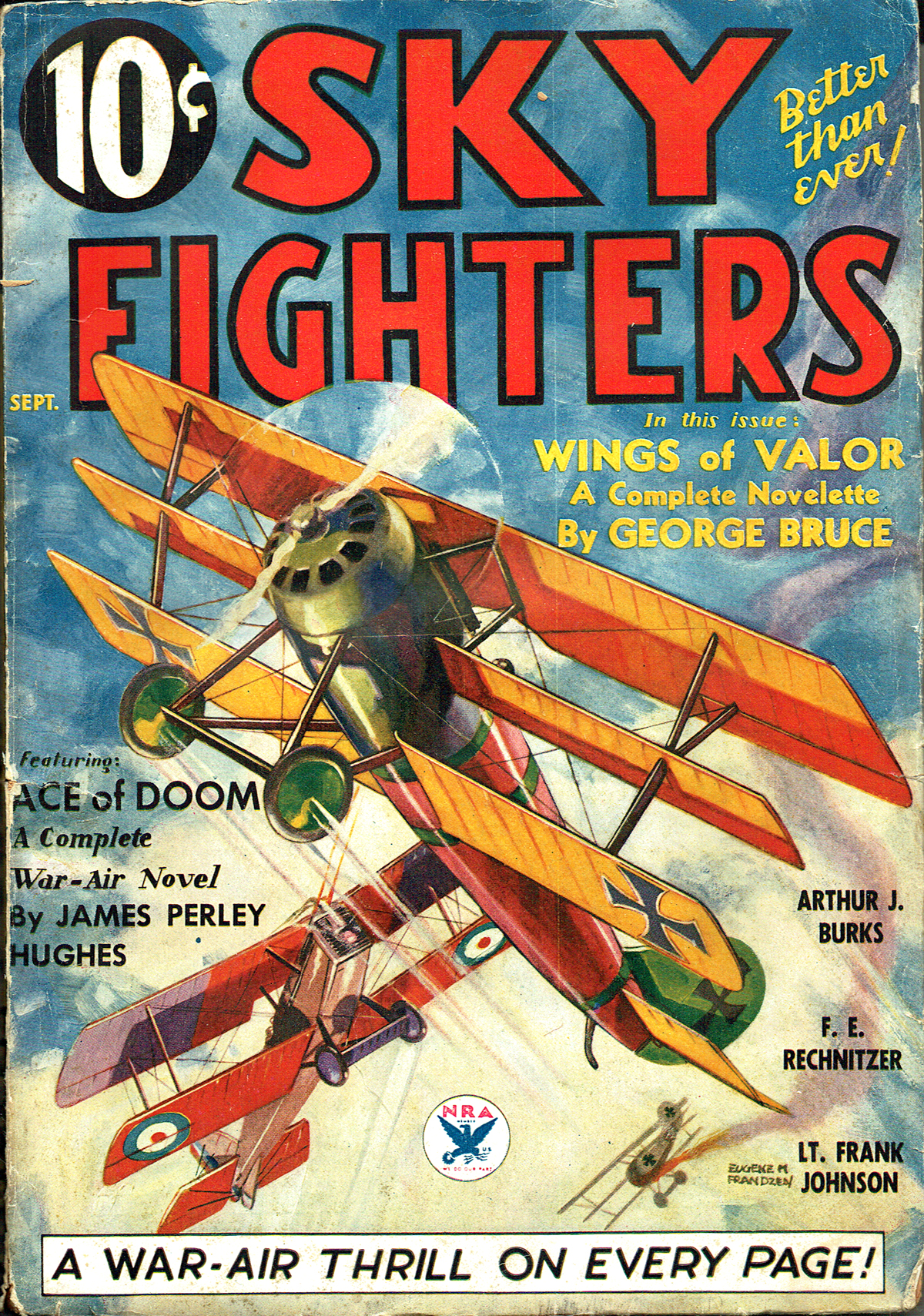
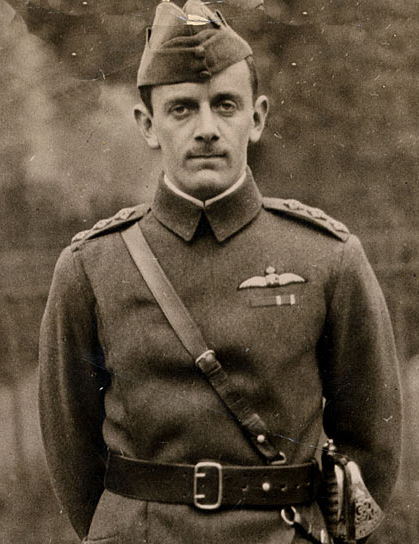 Royal Flying Corps and quickly developed a reputation as an aggressive pilot. In April 1915, armed with just a few bombs and some hand gernades, he successfully attacked a Zeppelin plant at Gontrobe while flying a
Royal Flying Corps and quickly developed a reputation as an aggressive pilot. In April 1915, armed with just a few bombs and some hand gernades, he successfully attacked a Zeppelin plant at Gontrobe while flying a 
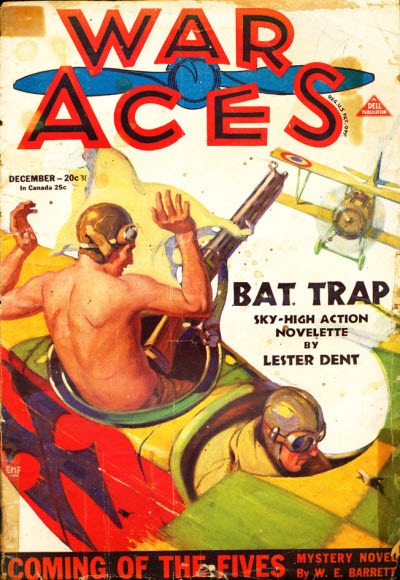 remembered as the man behind
remembered as the man behind 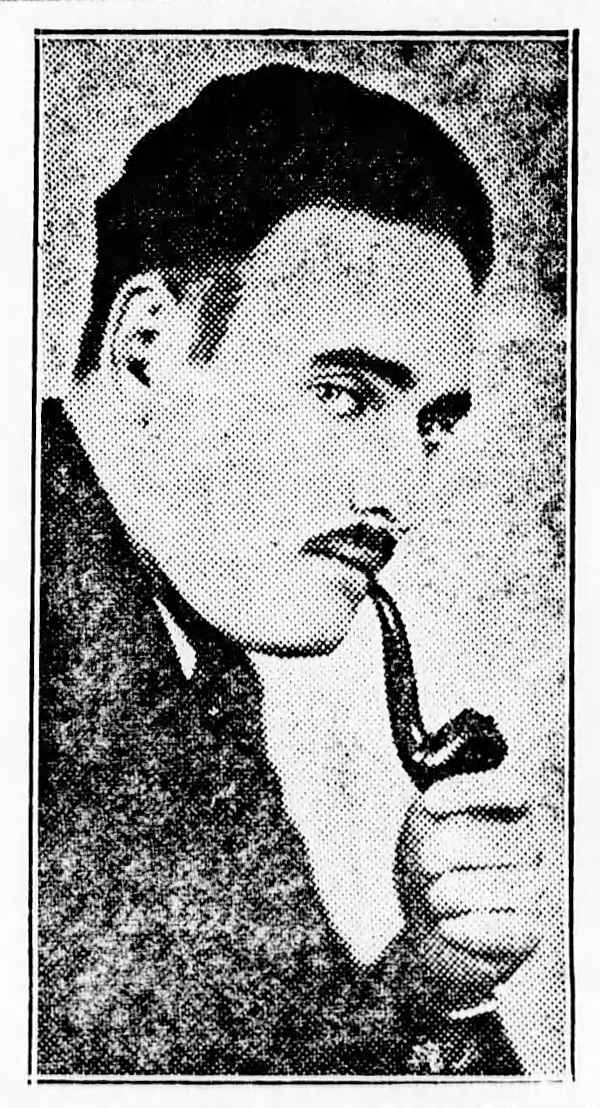
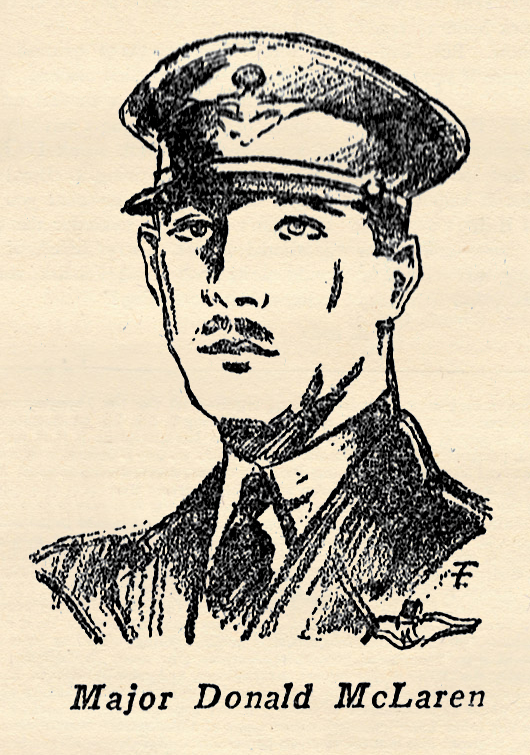 Donald McLaren was born in Ottawa, Canada, in 1893, but at an early age his parents moved to the Canadian Northwest, where he grew up with a gun in his hands. He got his first rifle at the age of six, and was an expert marksman by the time he was twelve. When the war broke out he was engaged in the fur business with his father, far up in the Peace River country. He came down from the north in the early spring of 1917 and enlisted in the Canadian army, in the aviation section. He went into training at Camp Borden, won his wings easily and quickly, and was immediately sent overseas. In February, 1918, he downed his first enemy aircraft. In the next 9 months he shot down 48 enemy planes and 6 balloons, ranking fourth among the Canadian Aces and sixth among the British. No ranking ace in any army shot down as many enemy aircraft as he did in the same length of time. For his feats he was decorated with the D.S.O., M.C., D.F.C. medals of the British forces, and the French conferred upon him both the Legion d’Honneur and Croix de Guerre. Oddly, just before the war ended, he was injured in a wrestling match with one of his comrades and spent armistice day in a hospital nursing a broken leg. He had gone through over a hundred air engagements without receiving a scratch. The air battle he describes below is unusual because almost 100 planes took part in it.
Donald McLaren was born in Ottawa, Canada, in 1893, but at an early age his parents moved to the Canadian Northwest, where he grew up with a gun in his hands. He got his first rifle at the age of six, and was an expert marksman by the time he was twelve. When the war broke out he was engaged in the fur business with his father, far up in the Peace River country. He came down from the north in the early spring of 1917 and enlisted in the Canadian army, in the aviation section. He went into training at Camp Borden, won his wings easily and quickly, and was immediately sent overseas. In February, 1918, he downed his first enemy aircraft. In the next 9 months he shot down 48 enemy planes and 6 balloons, ranking fourth among the Canadian Aces and sixth among the British. No ranking ace in any army shot down as many enemy aircraft as he did in the same length of time. For his feats he was decorated with the D.S.O., M.C., D.F.C. medals of the British forces, and the French conferred upon him both the Legion d’Honneur and Croix de Guerre. Oddly, just before the war ended, he was injured in a wrestling match with one of his comrades and spent armistice day in a hospital nursing a broken leg. He had gone through over a hundred air engagements without receiving a scratch. The air battle he describes below is unusual because almost 100 planes took part in it.